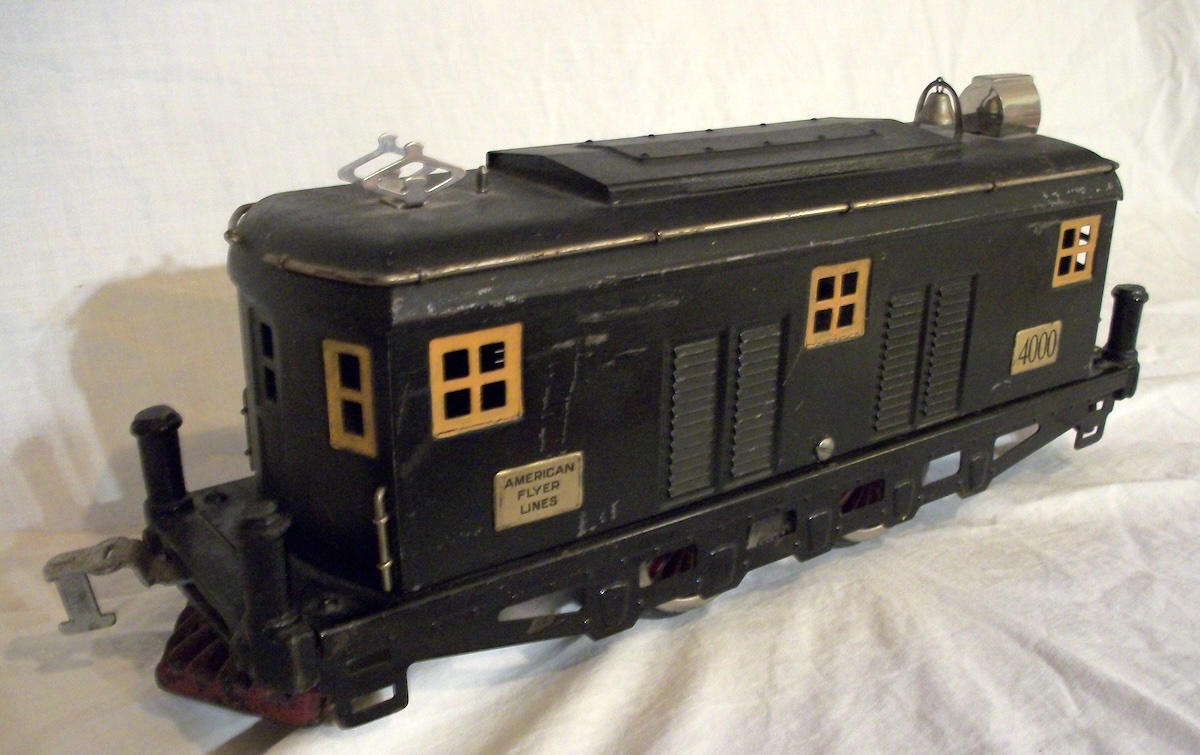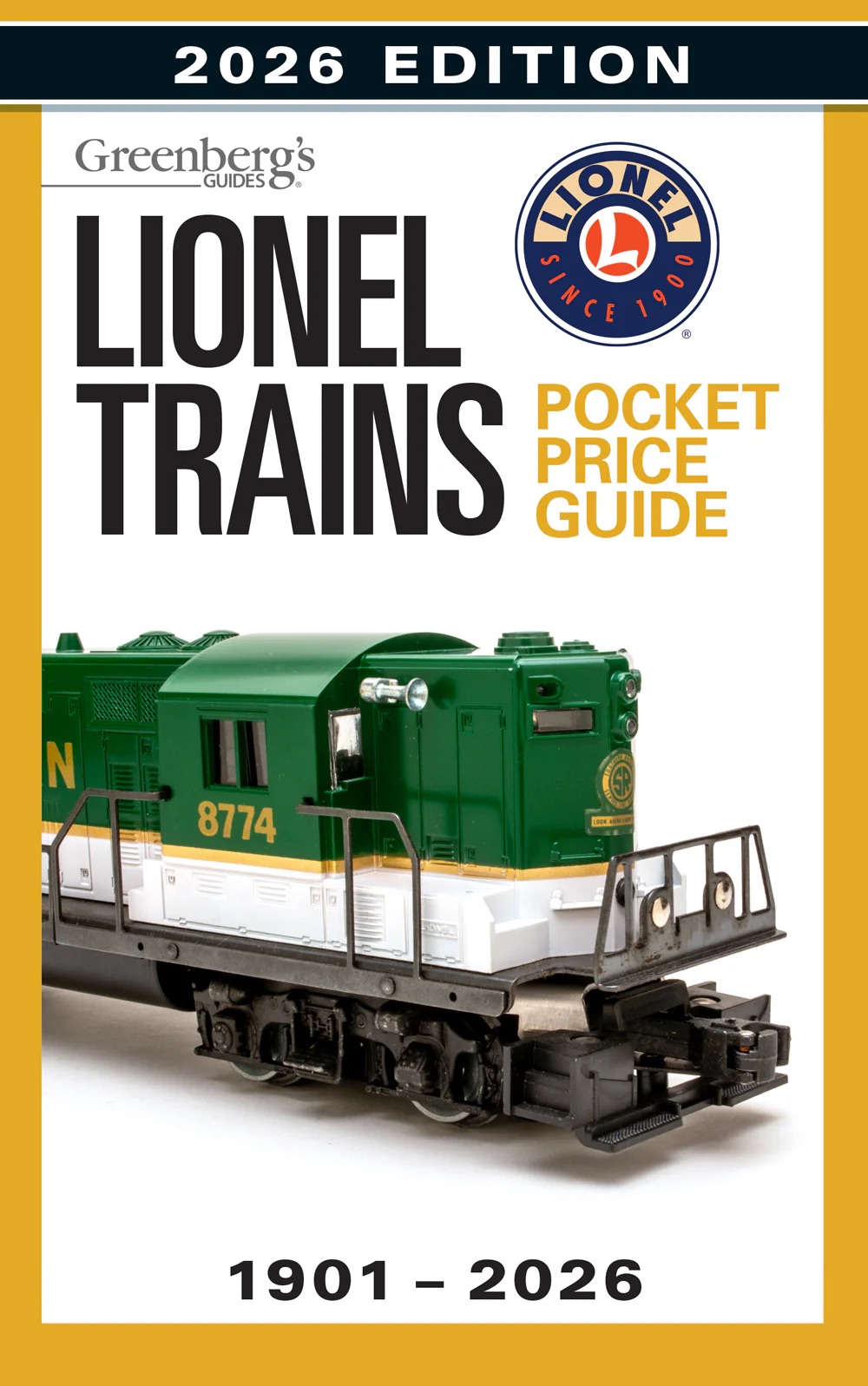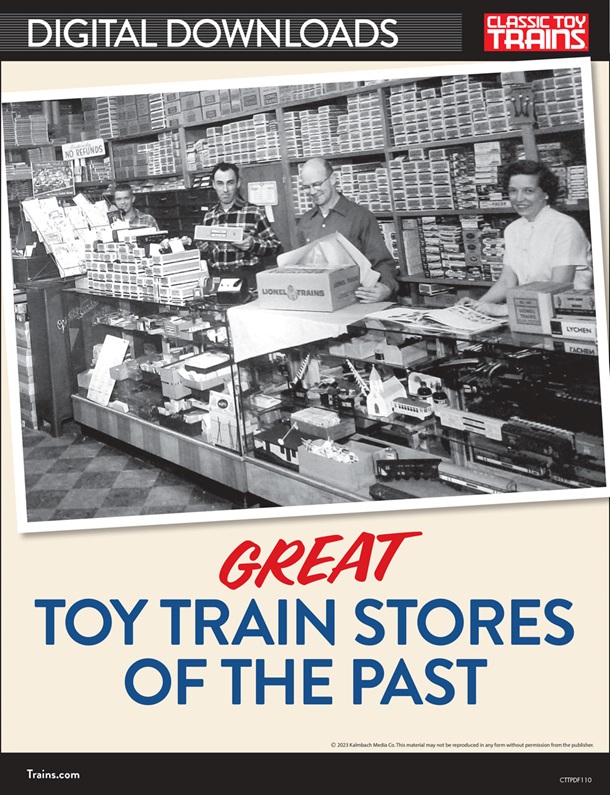Len Carparelli knew The Lionel Story very well. This talented artist, who made a career from restoring trains, primarily locomotives, built by Lionel during the post-World War II era of production, understood deeply the heritage that had shaped him. Len respected greatly the painters and designers who had come before him, and he aimed with intelligence and devotion to learn from them.
What I refer to as “The Lionel Story” was something Len believed in and sought to carry forward. Back in the early 1990s, when Classic Toy Trains started to locate and interview individuals who had worked for Lionel during the postwar period and even earlier, Editor Dick Christianson identified the profiles being published with the overline, “The Lionel Story.” It made good sense, because each of the different salesmen, display builders, engineers, and others had shaped Lionel.
Someone younger
Eventually, of course, the list of former Lionel employees who either contacted the magazine or I was able to find dwindled. Years were passing, and the people who had been on the payroll at Lionel in the 1940s, ’50s, and ’60s were growing older and dying. Try as I might, I had missed several key supervisors and sales executives, who had passed away before my search began. By the turn of the 21st century, I feared I had just about run out of leads. Worried about what had been lost to time, I confessed to Editor Neil Besougloff that The Lionel Story was over.
Then I realized a handful of younger individuals whom I had met in the toy train hobby were writing new chapters in The Lionel Story. They were doing just that by dedicating their lives and careers to studying how designers, toolmakers, and other craftsmen based in Lionel’s factories in northern New Jersey had developed, assembled, and decorated the firm’s magnificent O gauge trains and accessories.

Sometimes those younger men picked the brains of surviving employees to learn how specific steps in the manufacturing process had been executed. They did so to preserve valuable information for its own sake but also so they might replicate what had been done in order to recreate useful parts and thus be able to accurately repair and restore vintage Lionel locomotives, operating cars, and accessories.
Essential knowledge I was afraid was being lost to time was, instead, being kept alive. A handful of middle-aged individuals, who had enjoyed Lionel trains while coming of age in the postwar and modern eras, were striving to retain and revive the learning former company employees had figured out a generation earlier.
Len Carparelli
Leading the way in that critical pursuit of knowledge and experience was a lover of postwar Lionel trains named Len Carparelli. When I first was told about Len and his extraordinary understanding of how Lionel had painted and decorated its trains, in particular the GG1 electrics and F3 and Train Master diesels, I imagined him to be another old-timer holed up in New Jersey and nurturing great memories.
So it came as a total shock to me when, around 1993 or ’94, I spoke with Len on the phone for the first time. I quickly discovered that he had been born in 1950, which made him about my age. Besides a passion for Lionel trains, Len and I shared a love of and respect for much of the same music, especially the Beatles.
Even better from my perspective, Len was eager to unveil what he had learned as a painter working part time for Madison Hardware Co. while it was still in New York City and as a restoration artist with his own business. Long conversations on the telephone inspired Len and me to plan feature articles for Classic Toy Trains about how Lou Shur, owner of Madison Hardware, and his brother, Carl Shaw, would have Len paint F3 and tender shells for the famous retail outlet to sell.
In addition, Len wrote in depth about how Lionel had painted and lettered its trains back when he was just a toddler. That proved to be invaluable if for no other reason than the fact that in all my years of searching for former employees I had never been able to locate a supervisor or any experienced worker involved with painting. I had managed to reach former employees in many other areas of production, but the Painting Department had, to my great frustration, eluded me.
Fortunately for me, Len had been able through his extensive restoration of old Lionel models to “reverse engineer” the processes involved with the original painting, striping, and stamping of those models. He had arrived at significant conclusions about how laborers had masked shells by hand using tape and when metal paint masks had been developed to change the process sometime in 1955.
Len’s legacy
In article after article, none of which required extensive editing by yours truly, Len shed light on how virtually every one of the different Lionel F3 diesels had been painted and decorated. He wrote his own section of The Lionel Story, revealing the background on the various Santa Fe models, along with most of the others, including the Western Pacific, Texas Special, Wabash, and New Haven.
Elsewhere, Len reminisced about Madison Hardware and having to turn around boxes of unfinished body shells in a matter of weeks, always hoping to meet the high standards set by Lou and Carl. The fact that the two elderly gentlemen soon came to like and respect Len reflected on his craftsmanship and sweet personality.
For Len, above all, was a kind and giving individual. He reached out to others and did what he could to make them feel comfortable while sharing his basic love for everything Lionel. Chronologically too young to have been on the payroll in the 1950s, Len symbolically was punching in every day and walking with a smile to the Painting Department, eager to transform blank shells into magnificent trains.













